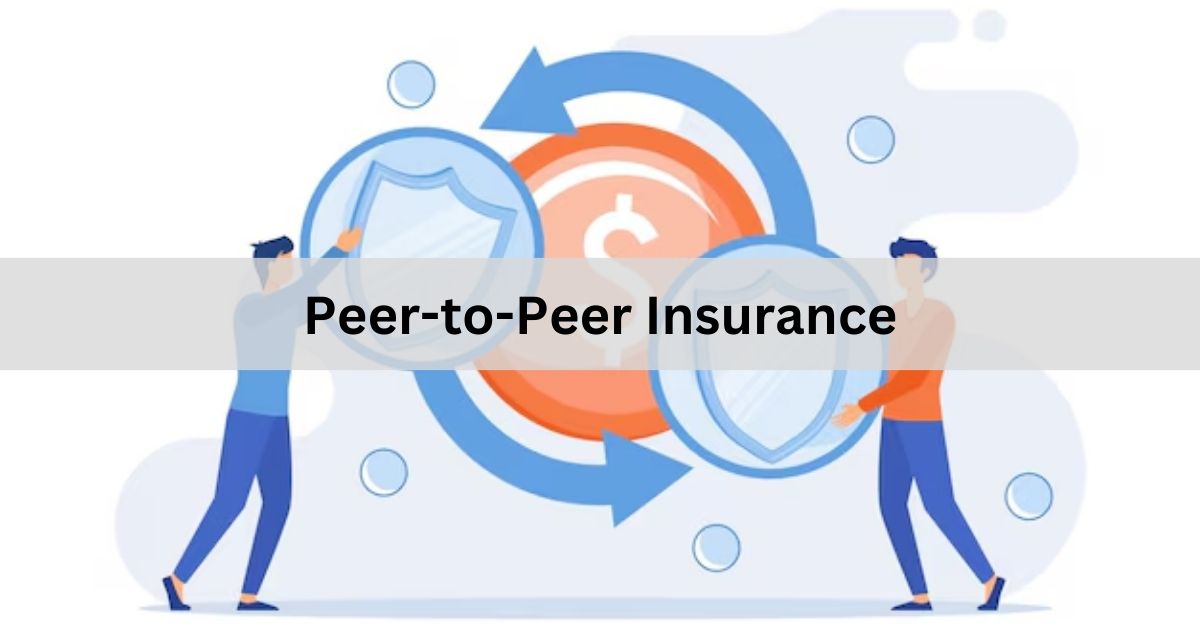The insurance industry is undergoing a significant transformation with the advent of peer-to-peer (P2P) insurance. This innovative model aims to address some of the traditional insurance system’s inefficiencies and challenges by leveraging the power of community and technology. In this article, we’ll explore what peer-to-peer insurance is, how it works, its benefits and drawbacks, and its potential impact on the insurance landscape.
Contents
Understanding Peer-to-Peer Insurance
Peer-to-peer insurance is a decentralized model where individuals form small groups to pool their premiums and share the risk among themselves. This approach is a departure from the traditional insurance model, where policyholders pay premiums to a central insurance company that then covers the risks. In P2P insurance, members of the group are incentivized to minimize claims and fraudulent activities because they directly affect the group’s pooled resources.
How Peer-to-Peer Insurance Works
In a P2P insurance setup, individuals join a group based on common interests, risk profiles, or mutual trust. Each member contributes to a collective pool of funds, which is used to pay out claims made by any group member. A third-party platform or facilitator typically manages the group, handles administrative tasks, and ensures regulatory compliance. If the pool’s funds are insufficient to cover a claim, a reinsurance company or another layer of protection steps in to cover the shortfall, providing an additional safety net.
Benefits of Peer-to-Peer Insurance
One of the primary benefits of P2P insurance is the potential for lower premiums. Because the risk is distributed among a smaller, more homogeneous group, and administrative costs are often lower, policyholders may enjoy more affordable rates. Additionally, the model fosters transparency and trust, as members have a clearer understanding of where their money goes and how it is used. Another significant advantage is the alignment of incentives; since group members share the financial responsibility, there is a collective interest in reducing risks and preventing fraud.
Drawbacks and Challenges
Despite its benefits, peer-to-peer insurance also faces several challenges. One of the main issues is scalability; forming and managing small, homogeneous groups can be difficult as the number of participants grows. Additionally, there is a risk of adverse selection, where high-risk individuals may be more likely to join the group, potentially leading to higher claims and financial instability. Regulatory hurdles are another concern, as P2P insurance must comply with existing insurance laws and regulations, which can vary significantly across different regions.
Real-World Examples
Several companies have successfully implemented peer-to-peer insurance models. For example, Lemonade, a U.S.-based insurtech company, uses a P2P model for renters and homeowners insurance. Policyholders form small groups, and unclaimed premiums at the end of the year are donated to a charity chosen by the group, fostering a sense of community and social responsibility. Another example is Friendsurance in Germany, which allows policyholders to form small groups that share part of their risk, leading to potential premium reductions and cashback rewards.
The Role of Technology
Technology plays a crucial role in enabling and scaling peer-to-peer insurance. Advanced algorithms and data analytics are used to assess risk, match individuals into appropriate groups, and manage claims efficiently. Blockchain technology is also being explored to enhance transparency and trust within the P2P insurance model, ensuring that all transactions and claims are recorded immutably and can be verified by all group members.
Potential Impact on the Insurance Industry
The rise of peer-to-peer insurance has the potential to disrupt the traditional insurance industry significantly. By offering lower premiums, increased transparency, and a stronger sense of community, P2P insurance could attract a growing number of policyholders who are dissatisfied with traditional insurance models. Moreover, the success of P2P insurance could spur traditional insurers to innovate and adopt more customer-centric approaches, ultimately benefiting consumers.
Regulatory Considerations
As with any disruptive innovation, peer-to-peer insurance must navigate a complex regulatory landscape. Ensuring compliance with insurance regulations, protecting consumer rights, and maintaining financial stability are critical challenges that P2P insurers must address. Regulators, in turn, need to adapt their frameworks to accommodate new models while safeguarding the interests of policyholders.
Future Trends and Developments
Looking ahead, the peer-to-peer insurance model is likely to evolve and expand into new areas. Innovations such as smart contracts and blockchain could further enhance transparency and efficiency, while partnerships between P2P insurers and traditional insurers could provide additional layers of protection and stability. As technology continues to advance, the possibilities for P2P insurance are vast, and its impact on the insurance industry could be profound.
Conclusion
Peer-to-peer insurance represents a promising shift in the insurance landscape, offering a more transparent, community-driven approach to risk management. While it faces challenges such as scalability and regulatory compliance, its potential benefits make it an attractive alternative to traditional insurance models. As technology and consumer preferences continue to evolve, P2P insurance could play a significant role in shaping the future of the industry, providing policyholders with more affordable, transparent, and customer-centric options. Embracing this innovative model could lead to a more resilient and inclusive insurance ecosystem, better equipped to meet the needs of a rapidly changing world.



























+ There are no comments
Add yours